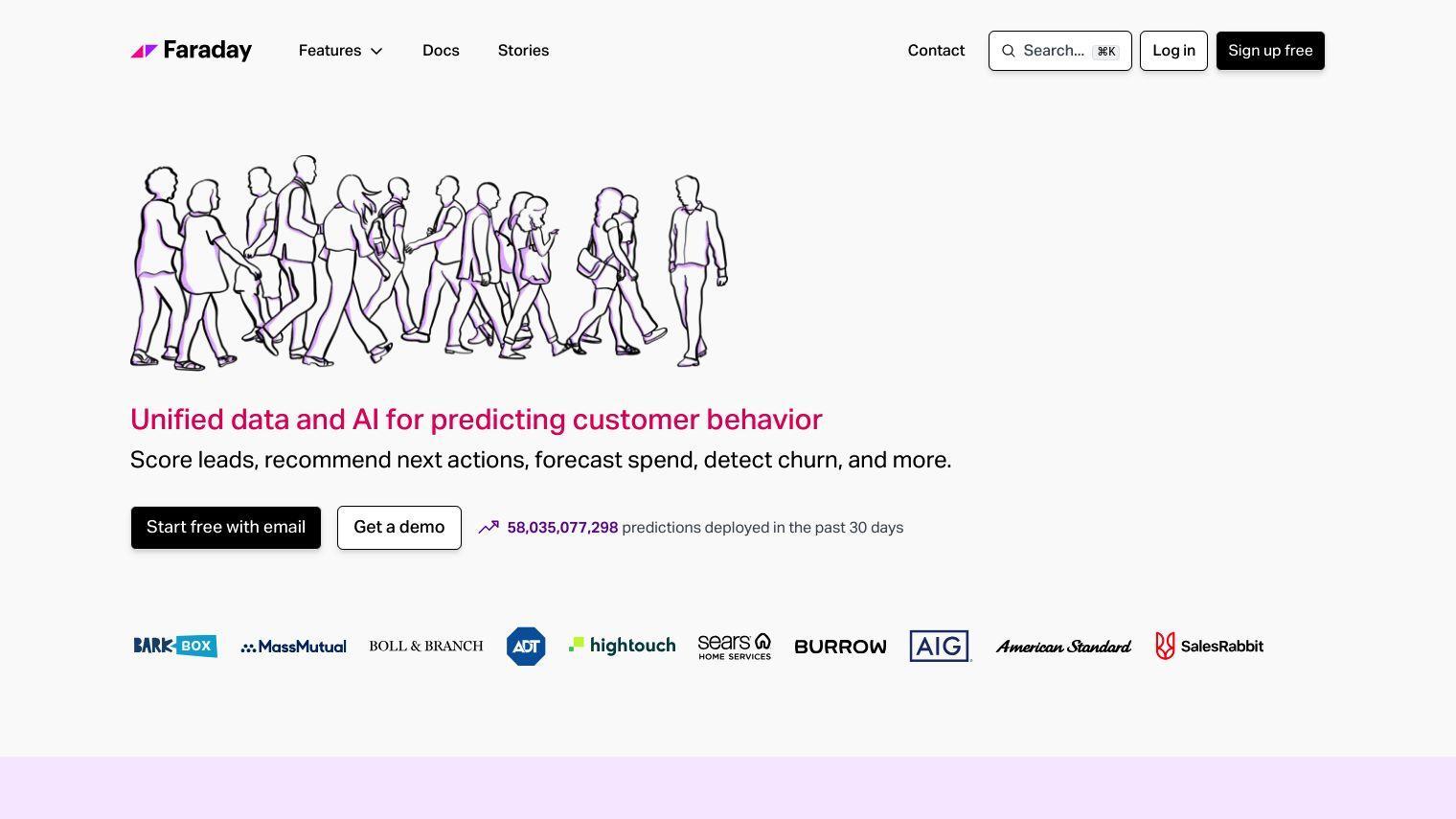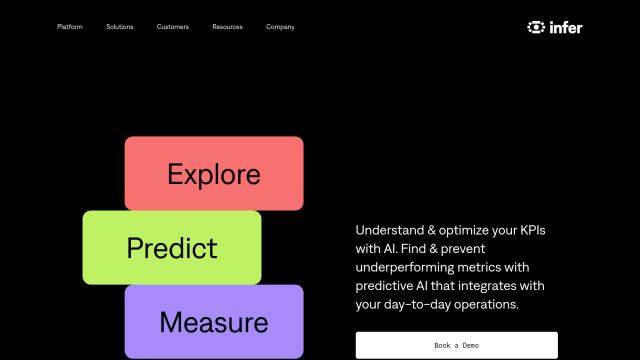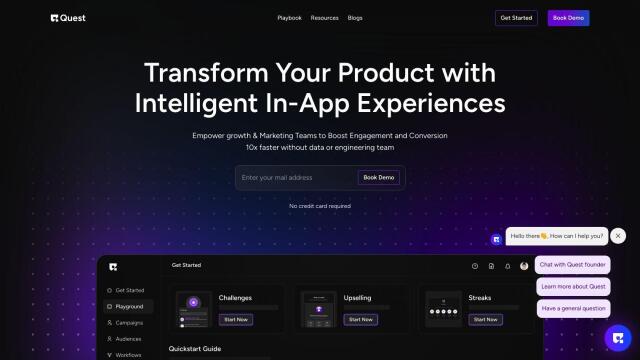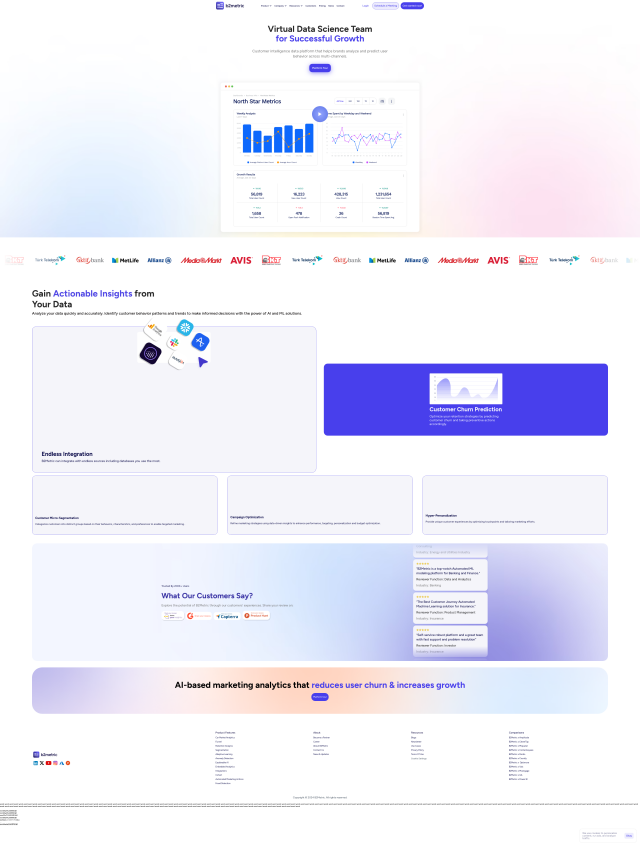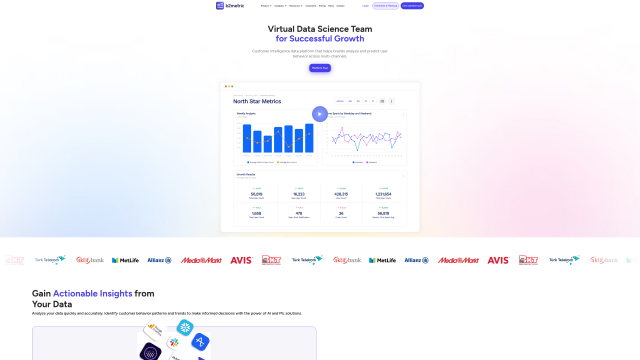Faraday is a customer behavior prediction platform that helps businesses turn leads into customers, forecast spending, identify churn risk and personalize customer experiences through a developer-focused API. The platform lets you create sophisticated, custom predictive experiences.
Faraday can integrate with a wide range of data sources and ingest many types of data, including CSV, Aurora, AWS Aurora Postgres, Azure SQL, BigQuery, Facebook Custom Audiences, GCS, Google Ads and more. That means the platform can integrate data and offer a richer understanding of customer behavior.
Some of the key features of Faraday include:
- Unified data and AI: Integrates multiple data sources to make predictions.
- Adaptive discounting: Personalizes discounts for each customer.
- Content personalization: Personalizes content for each user.
- Lead scoring: Scores leads to determine which are most likely to convert to a customer.
- Churn detection: Identifies customers at risk of churn.
- Built-in consumer data: Includes 1,500+ consumer attributes to help with predictions.
- Intuitive prediction: Users can select the customer behavior they want to predict, and the platform will figure out the best approach.
- AI safety: Includes features like bias mitigation, explainable AI and more.
- Stack integrations: Integrates with existing tools and software for easy deployment.
Faraday can be deployed in a variety of ways, including hosted, private cloud and on-premises, so you can use it with whatever infrastructure you have. Its security and privacy are strong, with compliance with major standards like SOC-2, NIST 800-53, CCPA, HIPAA and more.
The platform has an ergonomic API that lets developers quickly and easily build predictive experiences. Faraday also offers automated feature engineering, which can help find patterns in first-party data to improve predictions.
Pricing isn't disclosed, but you can try the platform with sample data to get started. The documentation and API reference are available, along with stories, academy resources and a blog to help you on your journey.
Published on June 14, 2024
Related Questions
Tool Suggestions
Analyzing Faraday...

